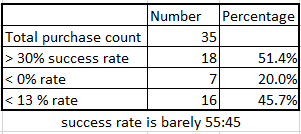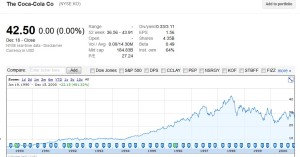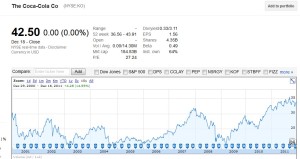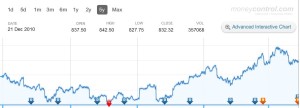We had two major events in the last few weeks – The election of Donald Trump as the president of US and the Demonetization of the 500/1000 Re notes
Let me start with the first event, which somehow was in the news for the last few weeks and I felt no need to respond or react. The event was a surprise for many and in a way similar to the Congress win in India in 2004. There was a sense that the market would crash if Donald trump is elected as president. I had no clue about what would happen if this event occurred, but to be frank I could not care less.
In investing, the key is to focus on the few critical factors which may impact your investment thesis and ignore the rest. I find it difficult to see why the election of a particular individual in a foreign company will have an impact on most of the companies in India at a micro level. Will consumers buy less soap or stop buying cars or going to movies just because Donald trump is elected in the US?
The more important event
The more relevant event for us has been the demonization of the high value currency. I personally think this a watershed event for the country. There are a lot of people looking at the interest rate and tax implications for the country, which I agree is quite good. However the bigger impact is from the signaling effect of this decision.
The second impact of this decision is that it sends a message that the government is serious about reducing tax evasion and corruption. A combination of GST, JAM trinity and now demonetization could be effective in reducing tax evasion (but not necessarily eliminate it). This would apply to a lot of unorganized sector companies where there is substantial evasion of taxes. These events are creating a level playing field in terms of taxation and will benefit the organized companies in the long run.
Analyzing the impact on your portfolio
The key point in the analysis of any major event is to evaluate the long term impact to the business model and profitability of the company.
I have no such plans for my portfolio. I made an argument in a prior post that we need to be ready for short term volatility and 15% or more drops from time to time. If one cannot handle these swings, then equities are not an appropriate vehicle. I will not sell any stocks where I think the long term prospects continue to be good, even if the near term appears horrible.
Let’s take the example of NBFCs to see how this event would impact some companies
We should however keep in mind that an NPA is not the same as a loss. An NPA means that the borrower has not made a timely payment and as a result, the lender has to mark the loan as non performing, stop accruing the interest income and add provisions (set aside some part of the profits) to account for the higher risk of non-payment.
Let’s look at a worst case scenario. Let’s say a company has around 1000 crs of assets on its books. Let’s make a very aggressive assumption that 10% of the assets will become NPAs with no hope that the borrower can become current on the loan. We can assume a 50% recovery rate on these NPA. So the eventual loss for the company would be to the tune of 50 crs.
Keep in mind that the above loss scenario is quite high in nature. Most of our poorly managed PSU banks have much lower level of losses inspite of much more illiquid assets and lower recovery rates.
I had written a post on first principles thinking as applied to investing here. As noted in the post, the intrinsic value of a company is the discounted sum of all its future cash flows. If you think of a company in that fashion, then by how much will you reduce the future value of the NBFC?
I think no matter how pessimistic you may be about the whole demonetization episode and the slow response of the government, it would be hard to argue that this issue will cause a permanent drop in demand for credit in the long run..
As an analogy, let’s say you are carrying 5000 Rs (in 100 Re notes J ) and you lose your wallet. It is a loss of 5000 and your net worth went down by that amount. However you future earning power which depends on your skills and other factors did not change due to this event.
The market reaction has been far more severe with some NBFCs losing almost 30% of their value in the last one month (almost 3-4 times our loss estimate).
We need to be prepared for a very ugly Q3. The demonetization event is likely to be quite disruptive to businesses in the short term, especially in the rural areas where banking services are poorly developed.
It will not feel good to keep losing money every day as the market corrects, but I plan to deploy some cash as bargains develop.
—————-
Stocks discussed in this post are for educational purpose only and not recommendations to buy or sell. Please contact a certified investment adviser for your investment decisions. Please read disclaimer towards the end of blog.






